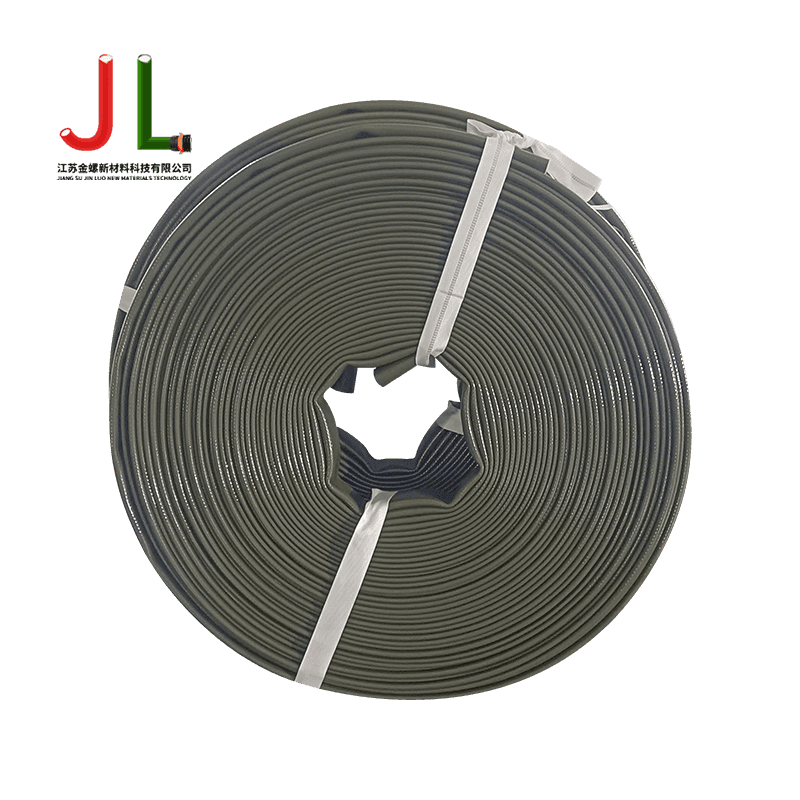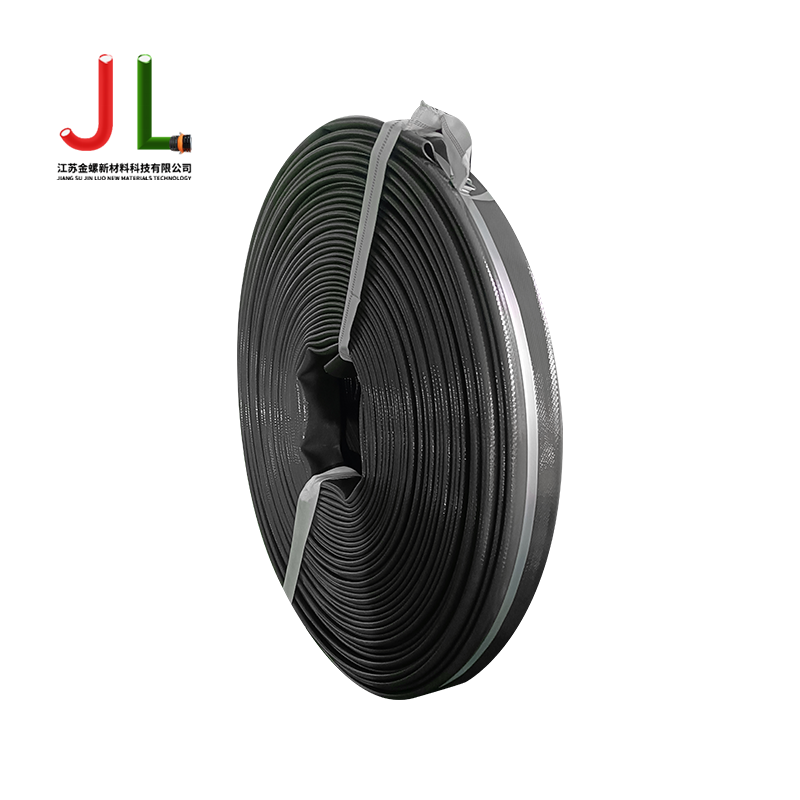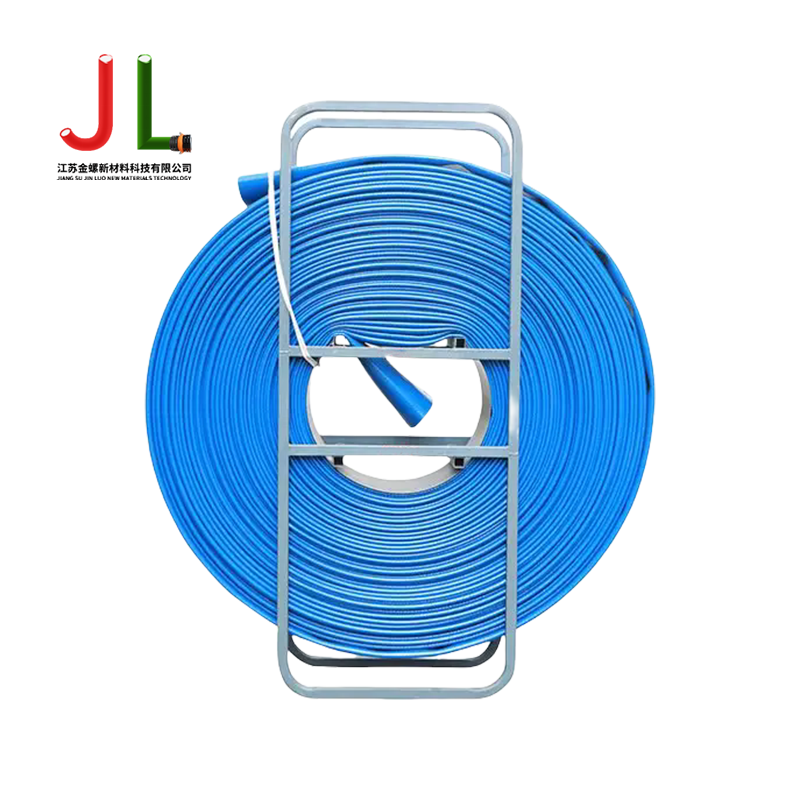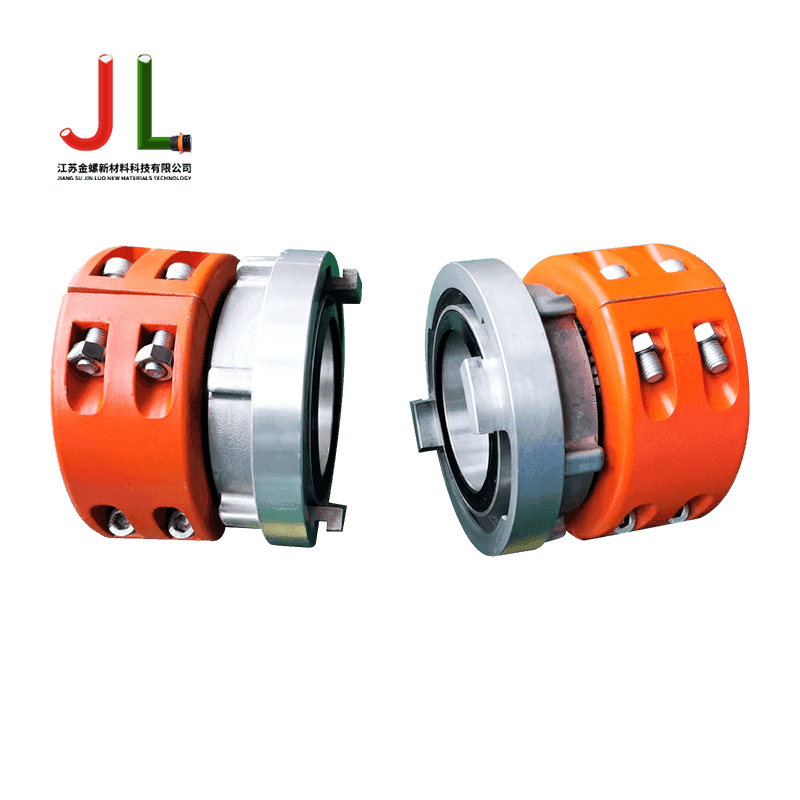Choosing the Right Collapsible Water Hose: Materials, Length, and Flexibility Explained
Introduction to Collapsible Water Hoses
Collapsible water hoses have revolutionized gardening, camping, and general outdoor water use by offering a lightweight, space-saving alternative to traditional rubber or vinyl hoses. These hoses are designed to expand under water pressure and contract when not in use, making them incredibly easy to store and transport. Their popularity has surged due to their convenience and user-friendly design, but with so many options available, selecting the right one can be daunting. Understanding the key factors—such as the materials used, the appropriate length for your needs, and the flexibility of the hose—is crucial to making an informed decision. A well-chosen hose can enhance your watering experience, while a poor choice may lead to frequent replacements and frustration. This guide will delve into the essential aspects you need to consider, ensuring you find a hose that balances durability, performance, and ease of use. We will explore how different materials impact longevity, how length affects water pressure and convenience, and why flexibility matters in various applications. By the end, you'll be equipped with the knowledge to choose a hose that perfectly fits your lifestyle, whether you're watering a small garden, washing your car, or heading out on a camping trip.
- Lightweight and easy to carry, reducing strain during use.
- Expands up to three times its original length when filled with water.
- Ideal for small spaces like balconies, RVs, and storage sheds.
- Typically made from latex or TPC interior with polyester or nylon cover.
- Resistant to kinking and tangling compared to traditional hoses.
Key Factors to Consider When Choosing a Collapsible Water Hose
Selecting the perfect collapsible water hose involves evaluating several critical factors to ensure it meets your specific needs. The material composition is paramount, as it directly influences the hose's durability, resistance to wear, and performance under varying water pressures. For instance, hoses with reinforced latex cores tend to be more flexible but may require careful handling to avoid punctures, while those with thermoplastic covers offer better abrasion resistance. Length is another vital consideration; a hose that's too short may limit your reach, while one that's excessively long can reduce water pressure and be cumbersome to manage. It's essential to measure your typical usage scenarios, such as the distance from your water source to the garden or vehicle, to determine the optimal length. Flexibility, often determined by the inner tube material and outer fabric weave, affects how easily the hose can be maneuvered around obstacles without kinking. Additionally, factors like connector quality, burst pressure rating, and UV resistance play significant roles in long-term reliability. By thoroughly assessing these elements, you can avoid common pitfalls like leaks or premature wear and enjoy a hose that delivers consistent performance. This section will break down each factor in detail, providing practical insights to guide your decision-making process.
- Material durability: Look for hoses with high-density polyester or double-layer latex.
- Length options: Common sizes range from 25 feet to 100 feet; choose based on your space.
- Flexibility: Ensure the hose remains pliable in different temperatures to prevent cracking.
- Burst pressure: Opt for hoses with a rating of at least 150 PSI for heavy-duty use.
- Connector type: Brass or solid plastic connectors offer better leak resistance.
Material Types: Durability and Performance
The material of a collapsible water hose is a primary determinant of its lifespan and functionality. Most hoses feature an inner core made from latex or thermoplastic copolymer (TPC), surrounded by an outer layer of polyester or nylon fabric. Latex cores are known for their exceptional elasticity and lightweight nature, allowing the hose to expand and contract efficiently. However, they may be susceptible to damage from sharp objects or extreme temperatures if not properly maintained. TPC, on the other hand, is a more modern material that offers improved resistance to cracking and ozone exposure, making it a durable choice for varied climates. The outer fabric layer protects the inner core from abrasion and UV rays; high-quality hoses often use tightly woven polyester that withstands frequent use without fraying. Some premium models include multiple layers or mesh reinforcement to enhance burst pressure and prevent stretching over time. When comparing materials, it's also important to consider environmental factors—for example, if you live in an area with hard water, a hose with anti-microbial properties might be beneficial. Understanding these material characteristics will help you select a hose that not only meets your performance expectations but also endures seasonal changes and regular wear. Below is a comparison table highlighting the key attributes of common materials to aid your selection.
- Latex inner tube: Highly flexible and expands well, but may degrade with prolonged sun exposure.
- TPC inner tube: More eco-friendly and resistant to temperature fluctuations.
- Polyester outer cover: Provides excellent abrasion resistance and durability.
- Nylon cover: Lighter weight but may be less resistant to UV damage.
- Reinforced layers: Additional mesh or double-layer construction for higher pressure tolerance.
| Material | Durability | Flexibility | Best For |
| Latex + Polyester | Moderate to High | Excellent | General gardening and light-duty tasks |
| TPC + Nylon | High | Good | Camping and RV use due to temperature resistance |
| Double-Layer Latex | Very High | Very Good | High-pressure washing and frequent use |
Choosing the Optimal Length for Your Needs
Length is a crucial factor that affects both the usability and efficiency of your collapsible water hose. A hose that is too short will limit your mobility and require additional extensions, while one that is too long can lead to water pressure loss and increased weight when expanded. To determine the ideal length, start by assessing the primary use cases—for example, a small balcony garden might only require a 25-foot hose, whereas a large backyard could necessitate 50 feet or more. It's also important to consider the water source location and any obstacles like trees or furniture that the hose must navigate around. Remember that when expanded, these hoses can be up to three times their stored length, so a 50-foot hose might effectively cover a 150-foot area when in use. However, longer hoses generally have lower burst pressure ratings due to the increased water volume, so balance length with durability needs. For those who enjoy best collapsible water hose for gardening, a medium length of 50 feet is often sufficient for reaching plants without compromising pressure. Additionally, if you plan to use the hose for multiple purposes, such as car washing and lawn care, a versatile length like 75 feet might be optimal. Always measure your space beforehand and account for future needs to avoid frequent replacements.
- Short lengths (25-35 feet): Ideal for compact spaces, patios, or as an extension hose.
- Medium lengths (50-75 feet): Versatile for most residential gardens and car washing.
- Long lengths (100 feet): Suitable for large properties but check pressure ratings carefully.
- Consider hose diameter: Wider diameters (e.g., 5/8 inch) maintain better pressure over long distances.
- Storage impact: Longer hoses take more space when collapsed, so plan storage accordingly.
Flexibility and Maneuverability in Different Settings
Flexibility is a standout feature of collapsible hoses, but it varies significantly based on design and material. A highly flexible hose allows for easy maneuvering around corners, trees, and other obstacles without kinking, which is essential for tasks like watering delicate plants or cleaning hard-to-reach areas. The inner core material plays a key role here—latex tends to offer superior flexibility compared to TPC, though TPC may maintain its pliability in colder climates where latex could stiffen. The outer fabric's weave density also influences how smoothly the hose bends; a looser weave might enhance flexibility but reduce abrasion resistance. For those seeking a lightweight collapsible water hose for camping, flexibility is critical because it enables compact packing and easy handling in rugged environments. Similarly, if you're using the hose on a boat or RV, a model that remains supple in various temperatures will prevent cracking and leaks. It's worth noting that flexibility can degrade over time with exposure to sunlight and chemicals, so opting for a hose with UV-resistant coatings can prolong its life. When testing flexibility, consider how the hose performs when fully expanded versus when collapsed—some models may become rigid under high pressure. Ultimately, prioritizing flexibility ensures that your watering or cleaning tasks are efficient and strain-free.
- Kink-resistant design: Prevents water flow interruption and prolongs hose life.
- Temperature tolerance: Choose hoses that remain flexible in both hot and cold conditions.
- Weight distribution: A balanced hose is easier to drag across surfaces without tangling.
- Use-case examples: Flexible hoses excel in gardens with multiple planting beds or for washing vehicles.
- Maintenance tips: Store in a cool, dry place to preserve flexibility over seasons.
Maintenance and Care for Longevity
Proper maintenance is essential to extend the life of your collapsible water hose and ensure it performs reliably season after season. Unlike traditional hoses, these models require specific care due to their expandable materials and internal structures. After each use, it's crucial to drain the hose completely and allow it to dry before storing it away. This prevents mold and mildew growth inside the inner tube, which can lead to unpleasant odors and degradation. Avoid exposing the hose to direct sunlight for prolonged periods, as UV rays can weaken the outer fabric and cause colors to fade. Similarly, extreme temperatures—both hot and cold—can affect the material's integrity; storing the hose in a shaded, temperature-controlled area is ideal. For those who use a collapsible water hose with high pressure, regularly inspect the connectors and seams for signs of wear, as high pressure can stress these points over time. Cleaning the hose periodically with mild soap and water helps remove dirt and debris that might abrade the surface. If you notice any small punctures, repair kits are often available to fix minor issues without replacing the entire hose. By following these practices, you can significantly enhance the durability of your hose and avoid common problems like leaks or reduced expansion capability.
- Draining technique: Hang the hose vertically or use air pressure to remove residual water.
- Storage solutions: Coil loosely in a ventilated bag or container to prevent creases.
- UV protection: Apply silicone-based sprays designed for hose covers to reduce sun damage.
- Winter care: Drain and store indoors in freezing conditions to prevent cracking.
- Regular inspections: Check for bulges, leaks, or fabric tears before each use.
Common Issues and How to Troubleshoot Them
Even with the best care, collapsible water hoses can encounter issues that affect their performance. Understanding these common problems and how to address them will save you time and money. One frequent issue is leakage at the connectors, which often results from worn washers or loose fittings. Replacing the washer or tightening the connection can usually resolve this. Another problem is the hose not expanding fully, which might be due to low water pressure or blockages in the nozzle; ensuring adequate pressure and cleaning the filter screen can help. Kinking, though less common than with traditional hoses, can still occur if the hose is twisted during use—gently straightening it should restore flow. For those concerned with collapsible water hose repair, small punctures can be patched using waterproof tape or dedicated repair kits, but larger tears may require replacement. Additionally, if the hose develops an odor, flushing it with a vinegar-water solution can eliminate bacteria buildup. It's also important to avoid dragging the hose over rough surfaces, as this can cause premature wear on the outer fabric. By proactively troubleshooting these issues, you can maintain optimal functionality and extend the hose's lifespan, ensuring it remains a reliable tool for your watering needs.
- Leak solutions: Inspect and replace O-rings or use thread seal tape on connectors.
- Expansion fixes: Check for kinks or obstructions and ensure water pressure is sufficient.
- Odor removal: Use a mixture of one part vinegar to three parts water, then rinse thoroughly.
- Puncture repair: Apply self-fusing silicone tape for a temporary fix until a patch kit arrives.
- Prevention tips: Avoid sharp objects and store properly to minimize damage risks.
FAQ
What is the average lifespan of a collapsible water hose?
The lifespan of a collapsible water hose typically ranges from 2 to 5 years, depending on usage frequency, material quality, and maintenance practices. High-quality hoses made with durable TPC inner tubes and reinforced polyester covers can last closer to 5 years with proper care, while budget models may wear out sooner. Factors like exposure to UV rays, extreme temperatures, and water pressure consistently exceeding the burst rating can shorten this timeline. Regular maintenance, such as draining and storing indoors, significantly extends longevity. For those using a collapsible water hose for car washing, rinsing off chemicals after use can prevent material degradation. It's also wise to inspect the hose periodically for signs of wear, like fabric fraying or connector corrosion, and address issues promptly to avoid premature failure.
Can I use a collapsible water hose with hot water?
Most collapsible water hoses are designed for cold water use only and may sustain damage if used with hot water. The inner latex or TPC tubes can soften, deform, or even melt when exposed to temperatures above 140°F (60°C), leading to leaks or reduced expansion capability. Always check the manufacturer's specifications for temperature tolerance—some specialized models are rated for warm water but rarely for boiling temperatures. If you need a hose for hot water applications, consider alternatives specifically built for that purpose. For general uses like gardening or lightweight collapsible water hose for camping, sticking to cold water ensures safety and durability. Additionally, sudden temperature changes can stress the materials, so avoid switching between hot and cold water abruptly.
How do I prevent my collapsible hose from tangling?
Preventing tangles in a collapsible water hose involves proper handling and storage techniques. When in use, uncoil the hose fully and allow it to expand without twists; if it does tangle, gently straighten it by hand rather than pulling forcefully. After use, drain all water and coil the hose loosely in large loops before storing it in a dedicated bag or hook. Avoid tight coils or knots that can cause creases and weaken the material over time. For those with a collapsible water hose with high pressure, ensuring smooth water flow reduces the likelihood of kinks that lead to tangles. Some models feature anti-kink technology, such as reinforced webbing or flexible connectors, which minimize this issue. Regularly inspecting the hose for twists and storing it in a cool, dry place will also help maintain tangle-free performance.
Are collapsible water hoses safe for drinking water?
Collapsible water hoses are generally not recommended for drinking water unless explicitly labeled as "potable water safe" or "drinking water safe." Many hoses contain materials like latex or certain plastics that can leach chemicals or harbor bacteria, making them unsuitable for human consumption. If you need a hose for drinking water, such as during camping or RV trips, look for models certified by standards like NSF/ANSI 61, which ensure the materials are non-toxic. These hoses often use TPC or other food-grade polymers and are free from lead and BPA. For typical uses like best collapsible water hose for gardening, this isn't a concern, but always err on the side of caution. Flushing the hose with clean water before first use can reduce contaminants, but regular cleaning is essential if used intermittently for drinking purposes.
What is the best way to store a collapsible hose in winter?
Storing a collapsible water hose properly in winter is critical to prevent damage from freezing temperatures. Start by completely draining the hose of all water, as any residual moisture can freeze and expand, causing the inner tube to crack or burst. Use air pressure or hang the hose vertically to ensure it's dry. Coil the hose loosely and store it in a cool, dry indoor location, such as a garage or shed, away from direct sunlight and extreme cold. Avoid folding or compressing it tightly, as this can create weak spots. For those in very cold climates, adding a protective cover or storing it in an insulated container provides extra security. If you've used the hose for collapsible water hose repair during the year, check for any vulnerable areas before storage. Proper winter care ensures your hose remains functional and ready for use when spring arrives.



 English
English عربى
عربى 中文
中文













